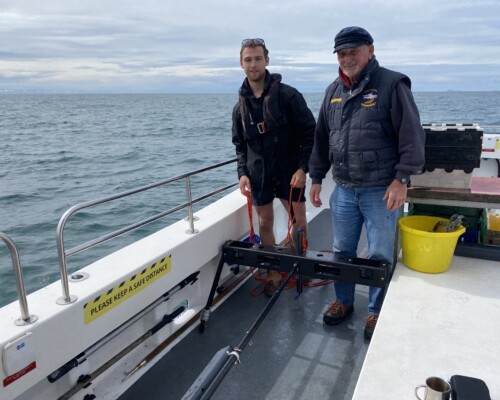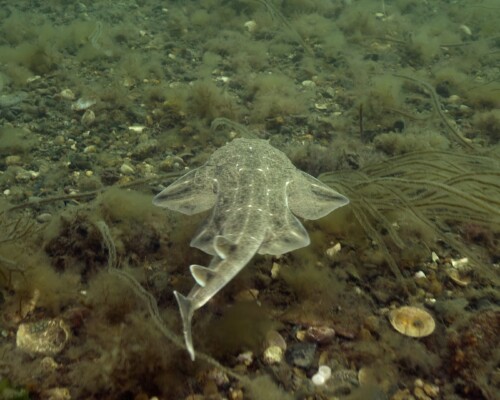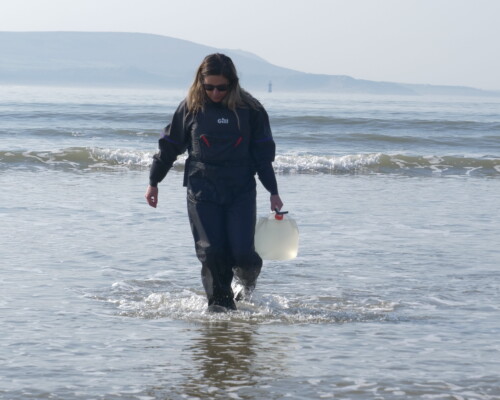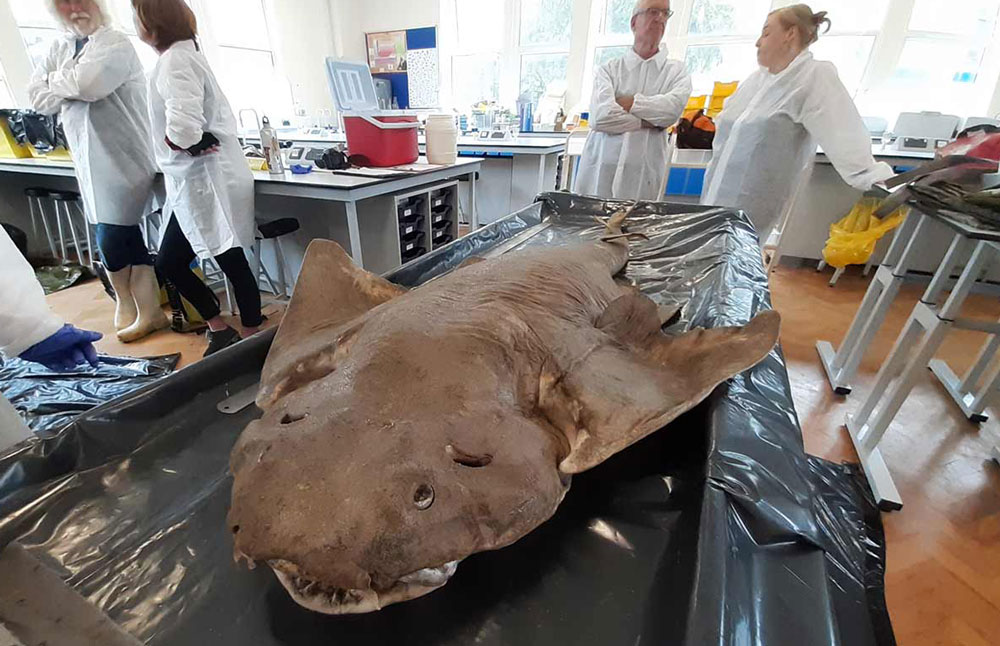Little is known about most of the biology and ecology of 27 elasmobranch species present in Welsh waters. There has been progress in understanding commercially targeted species, but the other 18 species are extremely data-limited, including 10 of which are listed on the Section 7 species list of the Environment (Wales) Act 2016.
Without data on distribution, abundance, seasonality, life-history traits, and associated habitats, it is challenging to safeguard these species.
Dissection events
In collaboration with the Cetacean Strandings Investigation Programme (CSIP), Aberystwyth School of Veterinary Science (ASVS) and University College Dublin Veterinary Hospital (UCDVH), Project SIARC were able to conduct two sets of #CSIofTheSea examinations of five Angelsharks, in both Wales and Ireland, to gather vital biological information on these Critically Endangered species.
Although it is extremely rare, strandings of dead Angelsharks can occur around the coast. Post-mortem examination and analysis of samples generates vital data related to the cause of death, health of the individual (including disease and contamination), diet, reproductive patterns, population structure, as well as connectivity to other populations across the East Atlantic and Mediterranean Sea.
The dissection events provided an incredible opportunity to both strengthen and expand current collaborations in Wales and Ireland, and highlighted the vast number of organisations working towards the conservation of Angelsharks and other shark species across the Celtic Seas Ecoregion. Together, we hope to build the capacity for collaborative elasmobranch conservation across the region.
Check out our new blog to find out more about the #CSIofTheSea examinations, and watch our video below, to find out more about the work happening in Ireland.
Research group
One of the Project SIARC aims is to enable new partnerships and collaborative research by bringing together elasmobranch scientists and NGOs across the Celtic Seas Ecoregion. To do this, we are developing a Project SIARC Research Group, to meet quarterly, to share recent findings, expertise, experience and current research between organisations.
Let's talk
If you’re a researcher or organisation working on elasmobranchs across the Celtic Seas Ecoregion, get in touch with us to find out more.
siarc@zsl.org





